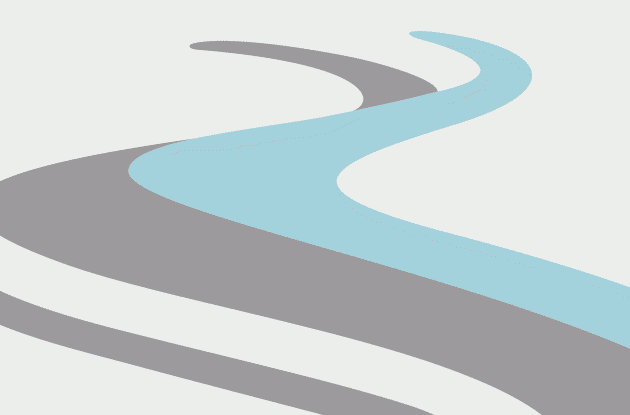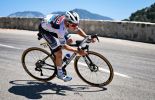Make Your Own Way
This article is being written at 35000 feet, somewhere between Santa Barbara, California and Colorado Springs, Colorado. It?s the middle of Camp Season for me, a period when I have the pleasure of connecting with amateur and novice cyclists from all over the world. This annual juxtaposition of dealing with elite-level professional cyclists and amateur cycling enthusiasts puts the subject of training into perspective, and helps remind me of the unique demands faced by those who make their living off the bike.
While Roadcycling.com does an exceptional job covering the world of professional cycling, it is important to realize that emulating our cycling heroes may not be the best path to our individual goals in the sport.
Relax Your Aero Position
Having spent days and nights in wind tunnels and poring over data gathered in testing, I can tell you myriad ways that aerodynamics can impact performance. Yet, the biggest lesson I?ve learned from the process is that a cyclist?s ability to produce power trumps aerodynamic advantage. A rider?s optimal time trial position is almost never the one with the lowest drag numbers because it?s too extreme to allow for a high power output during the full length of a real-life cycling event.
What constitutes an optimal aerodynamic position for the cycling enthusiast or amateur racer is quite different from that of a professional. The pros have plenty of time to adapt to a low body position or one that places the arms close together. Comfort is less of an issue for the professional because discomfort in the pursuit of performance is part of the job description.
For amateur cyclists who focus primarily on road events and compete in fewer than five time trial events per season, significant differences between a normal road cycling position and a time trial position are more likely to lead to decreased power output than increased performance due to great aerodynamics. Positions that feature very low handlebars often hinder power production for amateur cyclists because the resulting hip angle is too cramped. You look cool on the bike, but you?d be faster with your elbows and trunk up higher because it opens your hip angle and allows for better power production.
The trade off between aerodynamics and power becomes even more pronounced as the length of the time trial increases. Even in Lance Armstrong?s case, there are subtle differences between his time trial positions for long events (roughly 60 minutes) and short events (prologues), and additional adjustments are made for technical and non-technical courses.
Take Advantage of Limited Time
The traditional professional cyclist?s program includes a relatively long and gradual progression from steady, aerobic conditioning to long, sustained interval work. A few months before goal events, some mid-level racing is integrated, and then the program ramps up hard and fast for a high peak. That progression works great, if you have a lot of time to spend on your bike. When you?re fortunate to squeeze eight hours of training into a week, that traditional progression is too slow. The load in the early portion of the year isn?t high enough to lead to significant improvement, and by the time you get to the more intense portion of the year, you?re starting to ramp up from a lower fitness level than you could be.
I?ve scared more than a few amateur cyclists by progressing them through harder interval workouts normally reserved for the Preparation or Specialization (competition) periods months before their goal events. Their apprehension stems from the idea that doing hard work too soon will hurt their chances of reaching peak performance later in the year. However, for the athlete who has limited time, adding intensity may be the best way to get the most out of training. The increased training load from progressing through shortened Preparation and Specialization training blocks leads to greater aerobic power than we see when time-limited athletes focus solely on aerobic conditioning during the same time period. You still have to follow a periodization plan and focus on one aspect of training at a time, but the progression from one step to the next is more rapid with this approach.
After these more intense early-season training blocks, time-limited cyclists can progress into a more traditional Preparation Period of training, complete with the typical long, sustainable power intervals, and then move into the Specialization Period that leads them to peak condition for their goal event. The key is to take advantage of your relatively low weekly volume to increase intensity and start the second Preparation/Specialization sequence with a higher level of fitness than you would have otherwise. The pros have the luxury of volume, you have the luxury of recovery.
Clean Out Your Closet
Far be it for me to tell people how to spend their money, and I like a tricked-out bike as much as the next guy, but things are getting out of hand. With the quest to have the newest lightweight gadget or the same bikes the pros ride, I?ve seen riders wearing four-year-old, worn out cycling shorts and jerseys from 1996 while riding brand new $8000 machines.
When you?re done reading Roadcycling.com, go to your closet and evaluate the age of your cycling clothing. If you?ve been riding in a pair of shorts for more than two seasons, replace it
. The changes in performance fabrics, chamois shape and design, and seam placement in the past few years may not have grabbed headlines, but they have made a huge difference in comfort and temperature regulation. You?ll feel better, and in turn perform better, with updated cycling clothing.
Also check your heart rate monitor. New heart rate monitors, like the Nike Triax, are easier to use than previous generations of heart rate monitors. The new generation of monitors has improved features and can be downloaded into your computer. You can even download workouts from your computer into some monitors. You may also consider adding a power meter
to your arsenal of training equipment. You?ll get more out of your training from using new monitors than a new bicycle frame.
When you get done cleaning out your closet, don?t just toss your old gear into the trash. Contact your local cycling clubs and donate the clothing to juniors or riders who are just starting out in the sport. Just because there?s better equipment out there for you to use doesn?t mean your old jerseys, jackets
, vests, and gloves
can?t provide a new rider with a good starting point.
As much as I enjoy working with elite athletes across a wide spectrum of sports, going to camps and seeing the amazing progress athletes can make in the course of a few days is one of the most fulfilling parts of being a coach. Your path to success in this sport is different than the professionals?, and while there is a lot you can learn from them, it?s even more important make sure the steps you?re taking will lead you towards your goals, not theirs.
Chris Carmichael is Lance Armstrong?s coach and author of ?Chris Carmichael?s Food For Fitness?. To find out what Carmichael Training Systems can do for you, visit http://www.trainright.com.
Please check out our sponsors. They make Roadcycling.com possible:








